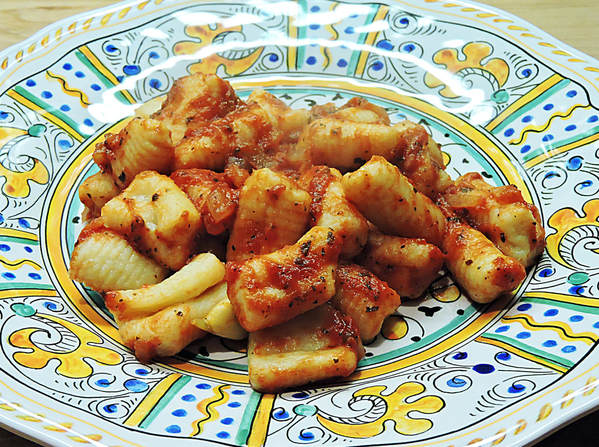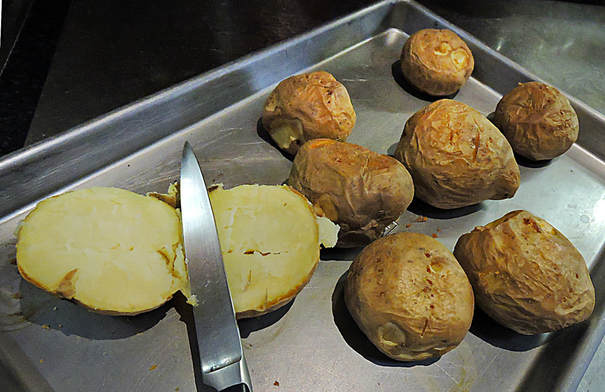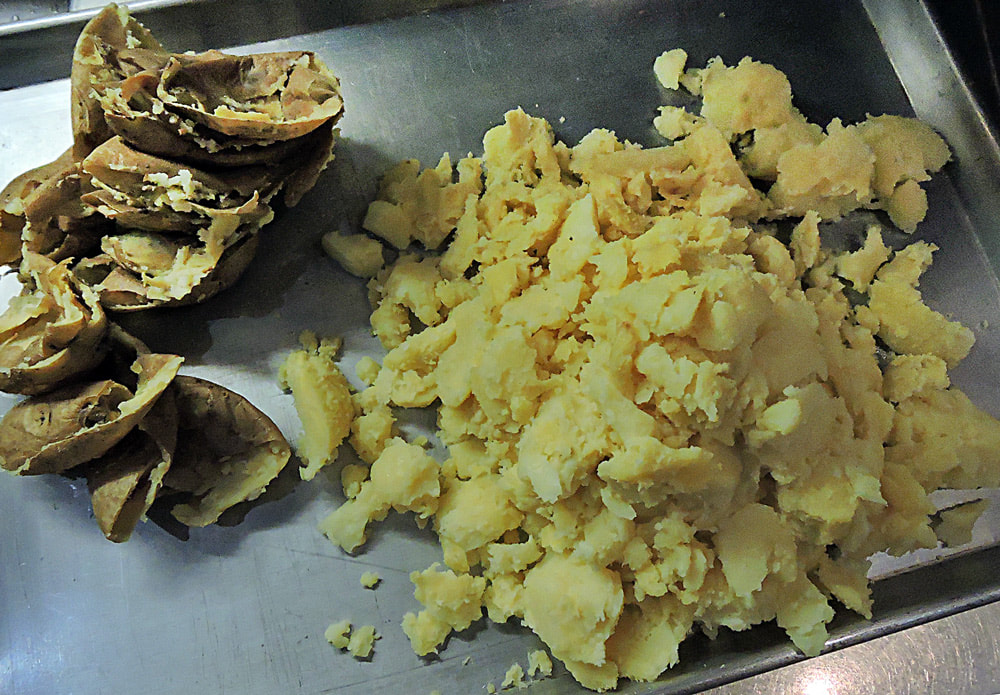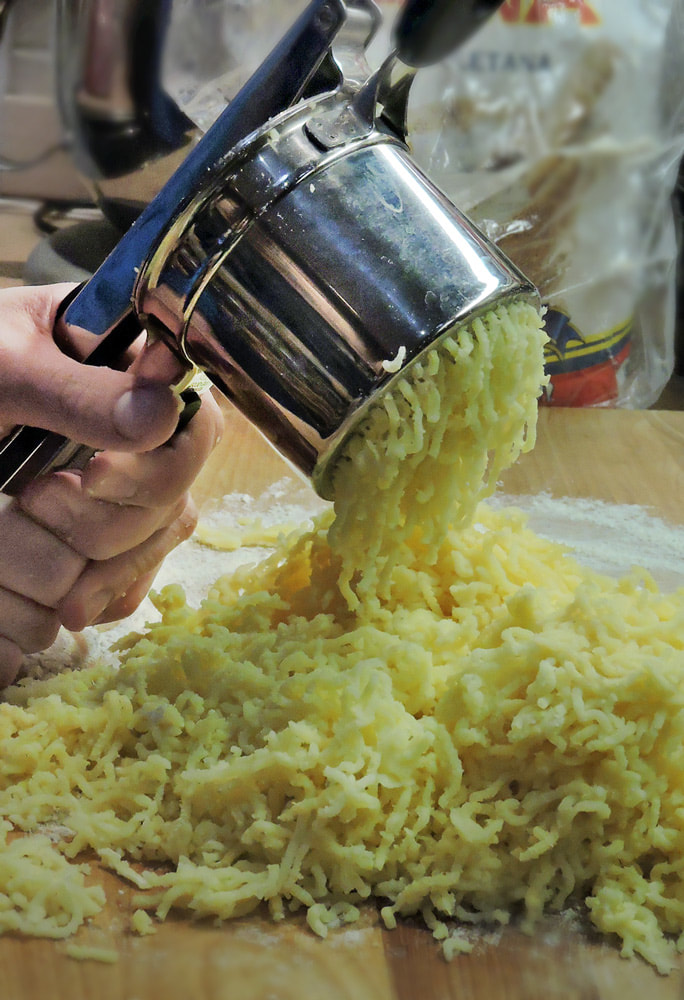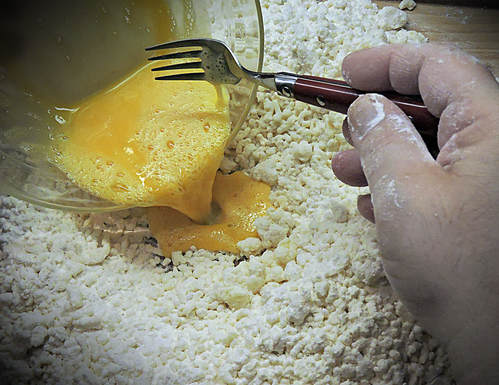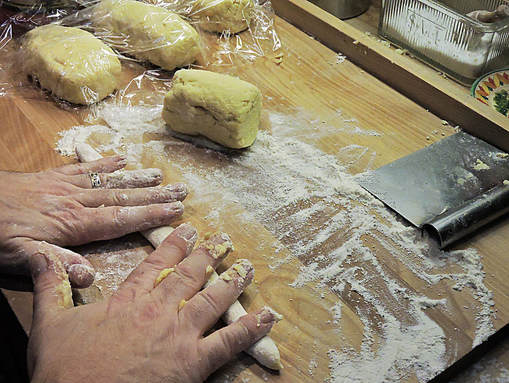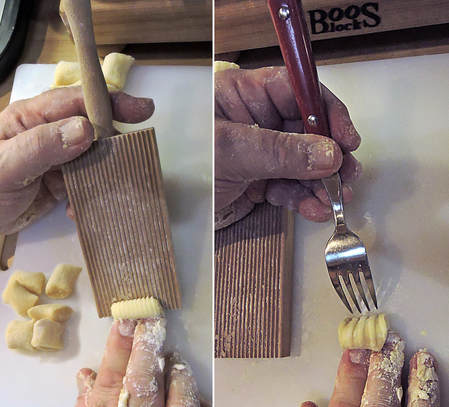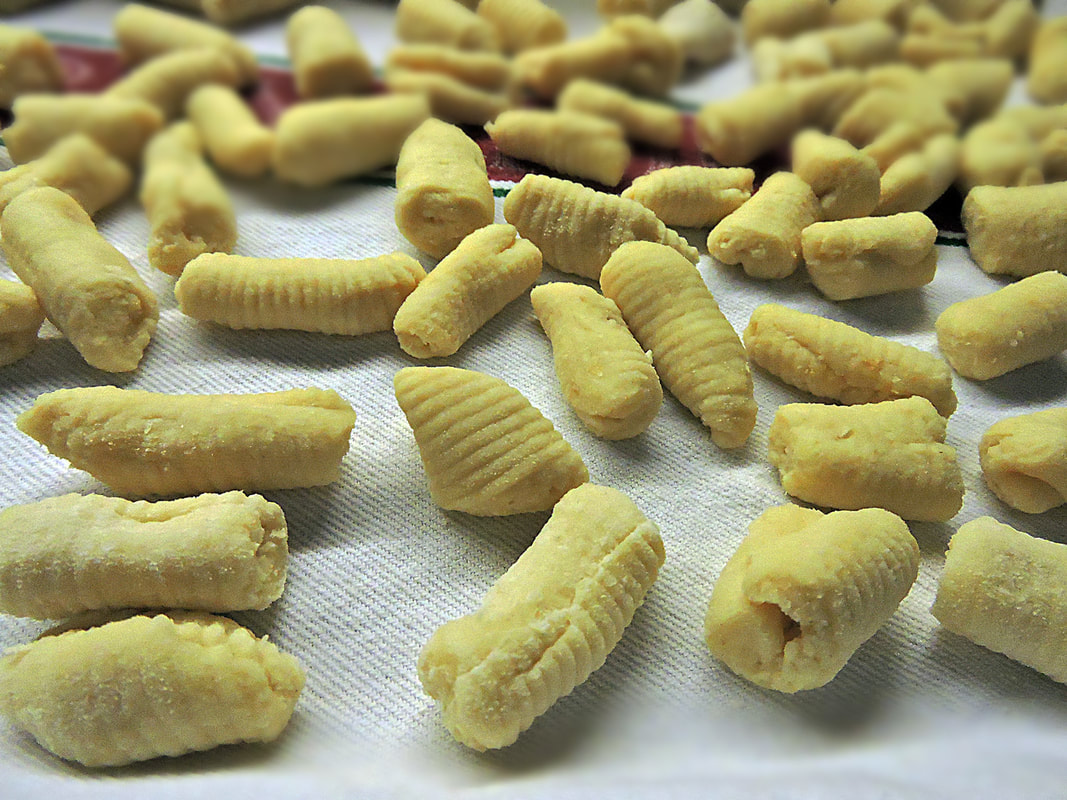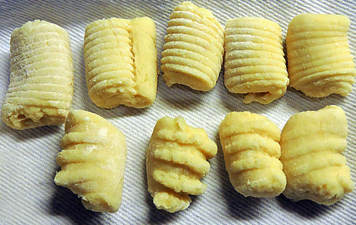|
I remember one of the first times I had potato gnocchi (pronounced "NYO-kee"), was at a New Jersey, Italian-American restaurant when I was a teen. I wasn't impressed. They were gluey and heavy. Perhaps they were frozen, but more than likely they had lost something in the translation from the old country. Still today, people in New Jersey might still pronounce them, "Nocky". In our family, we didn't have gnocchi until I was older. I remember one of my sisters making them on occasion. We nicknamed them, "sinkers" because they were so heavy. Well into my 30s, and after I had learned how to cook pretty well, I asked my mother to teach me to make gnocchi--especially after learning that her mother, Nonna Mariantonia, had taught her. When I asked why she never made them when I was a kid, she just shrugged and said, "Sure, with all the free time I had raising five kids plus working all day?" She's right. She worked in a factory as a supervisor her whole adult life, yet somehow still managed to put dinner on the table for us after she got home. Better late than never, and I was eager to learn...
Ingredients (for two batches: one for eating fresh, the other for freezing) 4 pounds of Yukon Gold or similar yellow potato--stored 1 week in a dark place before using 1 egg yolk 2 whole eggs, beaten 2 tablespoons sea salt "00" Italian style flour - 1/4 cup per pound of potatoes (or more, depending on humidity) ("00" makes a more tender gnocchi.) Equipment needed a Gnocchi board, or fork, fingers, or the back side of a cheese grater (each makes a different shape/texture) 2 half sheet pans (For drying and for freezing half the batch) Potato ricer (Do not use a masher) cotton kitchen towels or parchment paper My Mom didn't use a gnocchi paddle, or rigagnocchi. She used her fingers and the back of a fork. She actually taught me two methods for two different shapes--the back of a fork and her first two fingers. The fork makes ridges on the back side---good for holding a thick ragu. The two fingers made a sort of cavetelli shape, by taking a small cylinder of dough and pressing into it while dragging toward herself on the work surface. This made one smooth side and a little cave in the other--good for cream and thinner sauces. I can still remember Mom's bent, arthritic fingers rapidly producing them one by one. In this recipe, I'll be shaping with a fork and gnocchi board. Instructions
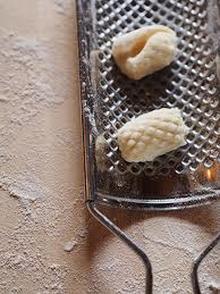 The reverse side of a cheese grater makes a raised nub texture The reverse side of a cheese grater makes a raised nub texture Shaping Gnocchi As you shape your gnocchi, place them (not touching) on a cotton kitchen towel spread on top of a half sheet pan. Let them dry for 15 for about 1 hour before cooking. Then place them into a large pot of well-salted, rapidly boiling water, give a couple of gentle stirs, then cook until they all float to the top. After all are floating, cook for another minute, then drain in batches using a spider, placing them into either a saucepan containing your preferred sauce, cooking and turning gently for a minute or two until the gnocchi have absorbed the sauce's flavors. Turn out into a pasta bowl, and top with your favorite cheese--Parmigiano-Reggiano, Pecorino, cacciocavallo, etc. Freezing the Second Half of The Gnocchi
After the first half of your dough is finished, repeat and fill a second sheet pan, then let dry as with the first batch. The second pan can then be placed immediately into a freezer for a future meal. (If a half sheet pan won't fit, place the gnocchi on smaller trays that will fit). After they are frozen rock solid (at least 10 hours), immediately place them into a large zip-lock plastic bag, squeeze to remove all the air and zip it closed. To prevent against freezer burn, place it into a second bag. Once you hone your gnocchi-making skills, you can experiment with all sorts of different types--pumpkin, sweet potato, carrot, ricotta and more. Gnocchi are great with both simple sauces (like butter & sage or olive oil, garlic and pepperoncino) or complex sauces like bechamel, pestos or even ragu Bolognese. Enjoy, and don't forget to let me know how yours turned out! --Jerry Finzi |
Archives
July 2023
Categories
All
|

